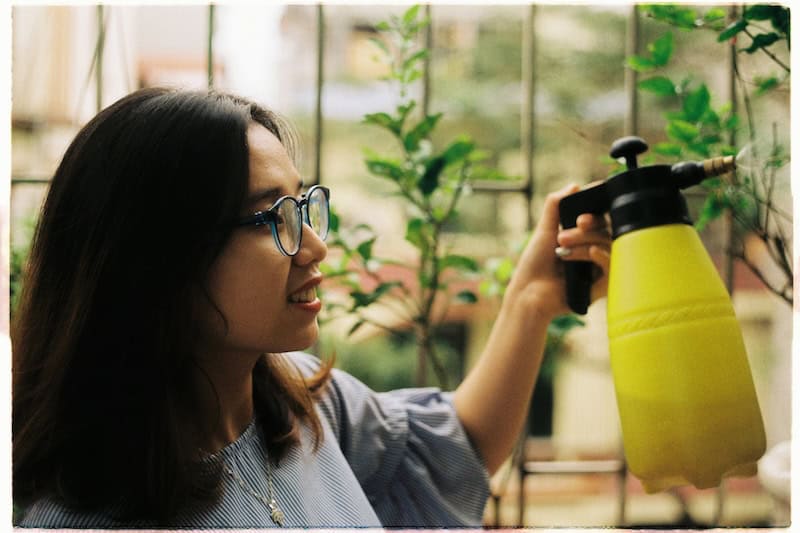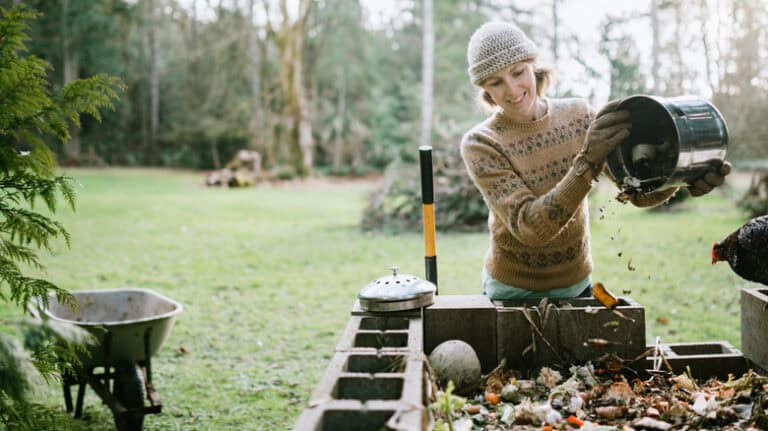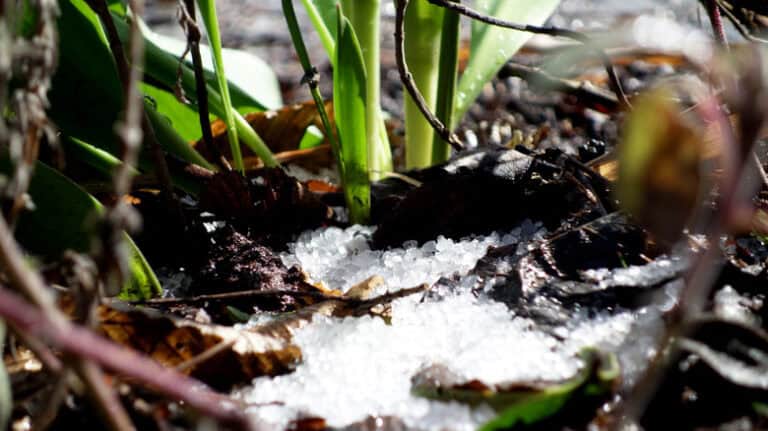7 Clever Hacks to Keep Houseplants Thriving While You’re Away
Keeping houseplants well-watered while you’re away can be a challenge, but with the right strategies, your plants can thrive even during your absence. Here are seven detailed hacks to ensure your houseplants remain hydrated:
1. Self-Watering Pots
Self-watering pots are a fantastic solution for keeping your plants hydrated for an extended period. These pots come with a built-in reservoir at the bottom that allows the plant to draw water as needed. Here’s how they work and why they are beneficial:
How They Work: Self-watering pots have a water reservoir at the base, separated from the soil by a perforated platform. A wick or capillary action helps transfer water from the reservoir to the soil, ensuring the plant gets consistent moisture.
Benefits:
- Consistent Moisture: The plant only takes up as much water as it needs, preventing overwatering or underwatering.
- Long-lasting: Depending on the size of the reservoir and the plant’s water needs, these pots can keep your plant watered for several days to weeks.
- Reduced Maintenance: Perfect for busy individuals or frequent travelers, as you don’t need to water your plants daily.
When choosing a self-watering pot, consider the size and water needs of your plant. For larger plants, opt for pots with a bigger reservoir. For smaller plants, ensure the pot is appropriately sized to avoid root rot.
2. Watering Globes
Watering globes are an aesthetically pleasing and practical solution to keep your houseplants hydrated. These glass or plastic globes are filled with water and inserted into the soil, where they gradually release water as needed.
How They Work: When you insert a watering globe into the soil, the water is released slowly, only when the soil becomes dry. This ensures a consistent supply of moisture to the plant’s roots.
Benefits:
- Easy to Use: Simply fill the globe with water and insert it into the soil. The plant will draw water from the globe as needed.
- Aesthetic Appeal: Watering globes come in various designs and colors, adding a decorative element to your plant setup.
- Extended Watering: Depending on the size of the globe and the plant’s water requirements, a single watering globe can provide moisture for up to two weeks.
To use watering globes effectively, ensure they are fully inserted into the soil and that the soil is well-draining. If the globe empties too quickly, it may indicate the soil is too dry or the globe is not inserted deeply enough.
3. Capillary Matting
Capillary matting, also known as watering mats, is a convenient method for keeping multiple houseplants hydrated simultaneously. These mats are made from absorbent materials that draw water up from a reservoir and distribute it to the plants’ roots.
How They Work: Place the capillary mat in a tray or shallow container filled with water. Position your potted plants on top of the mat, ensuring the pots have drainage holes. The mat will wick water from the tray and supply it to the plants through the drainage holes.
Benefits:
- Uniform Watering: All plants placed on the mat receive consistent moisture, reducing the risk of some plants being overwatered while others are underwatered.
- Time-Saving: Ideal for individuals with multiple houseplants, as it eliminates the need to water each plant individually.
- Customizable: Capillary mats can be cut to fit any size tray or container, making them versatile for various plant setups.
To use capillary matting effectively, ensure the mat remains in contact with the water in the tray. Refill the tray as needed to maintain a consistent water supply. This method is especially useful for small to medium-sized plants.
4. DIY Wicking System
A DIY wicking system is a cost-effective and customizable way to keep your houseplants watered. This method uses a wick, such as a cotton string or yarn, to transfer water from a reservoir to the plant’s soil.
How They Work: Place a container of water next to your plant. Insert one end of the wick into the water container and the other end into the plant’s soil. The wick will draw water from the container and transport it to the soil.
Benefits:
- Inexpensive: You can use household items like cotton strings, shoelaces, or strips of fabric to create the wick.
- Adjustable: You can control the amount of water the plant receives by adjusting the thickness and length of the wick.
- Versatile: Suitable for various plant sizes and types, making it a flexible solution for different watering needs.
To set up a DIY wicking system, ensure the water container is elevated slightly above the plant’s pot to facilitate water transfer. Check the wick periodically to ensure it remains moist and replace it if it becomes clogged or ineffective.
5. Pebble Trays
Pebble trays are a simple yet effective method to maintain humidity and moisture for your houseplants. This technique involves placing a tray filled with pebbles and water underneath your plant pot.
How They Work: Fill a shallow tray with pebbles and add water until it reaches just below the top of the pebbles. Place your plant pot on top of the pebbles, ensuring the pot is not sitting directly in the water. As the water evaporates, it creates a humid microenvironment around the plant, which helps maintain moisture levels.
Benefits:
- Humidity Control: Particularly beneficial for plants that thrive in humid conditions, such as ferns and orchids.
- Prevent Overwatering: The plant absorbs moisture through evaporation, reducing the risk of root rot.
- Simple Setup: Requires minimal materials and effort to implement.
To maximize the effectiveness of a pebble tray, use a tray that is larger than the plant pot to ensure adequate water evaporation. Refill the tray with water as needed to maintain the desired humidity level.
6. Plastic Bag Greenhouse
Creating a mini greenhouse using a plastic bag is an excellent way to keep your houseplants hydrated while you’re away. This method traps moisture and creates a humid environment around the plant, reducing water loss.
How They Work: Water your plant thoroughly before leaving. Cover the plant with a clear plastic bag, ensuring the bag does not touch the plant’s leaves. You can use stakes or a frame to keep the bag elevated. Seal the bag loosely to allow some air circulation while trapping moisture.
Benefits:
- Humidity Retention: The plastic bag traps moisture, creating a humid environment that reduces water loss through evaporation.
- Extended Watering: This setup can keep your plant hydrated for up to a week or more, depending on the plant’s water needs and the size of the bag.
- Cost-Effective: Uses readily available materials and requires minimal setup.
To avoid fungal growth or rot, ensure the plant is not overwatered before covering it with the plastic bag. This method works best for small to medium-sized plants and should be used with caution for plants sensitive to high humidity.
7. Plant Saucers
Using plant saucers is a straightforward and effective way to keep your houseplants watered. Plant saucers placed under the pots can hold excess water, which the plant can absorb as needed.
How They Work: Place a saucer or tray under each plant pot. Water the plant thoroughly, allowing excess water to drain into the saucer. The plant will absorb the water from the saucer through the drainage holes in the pot.
Benefits:
- Easy to Implement: Requires no special equipment and can be set up quickly.
- Water Conservation: Excess water that would otherwise drain away is retained for the plant to use, reducing water waste.
- Visual Indicator: The saucer allows you to see when the plant has absorbed all the water, making it easier to monitor the plant’s hydration needs.
To use plant saucers effectively, ensure the pot has adequate drainage holes and the saucer is appropriately sized to hold enough water for the plant. Regularly check the saucer to prevent standing water, which can attract pests or cause root rot.
By implementing these seven hacks, you can ensure your houseplants stay hydrated and healthy even when you’re not around. Each method provides a unique approach to watering, catering to different plant types and needs. Experiment with these strategies to find the best solution for your houseplant collection. Happy gardening!






